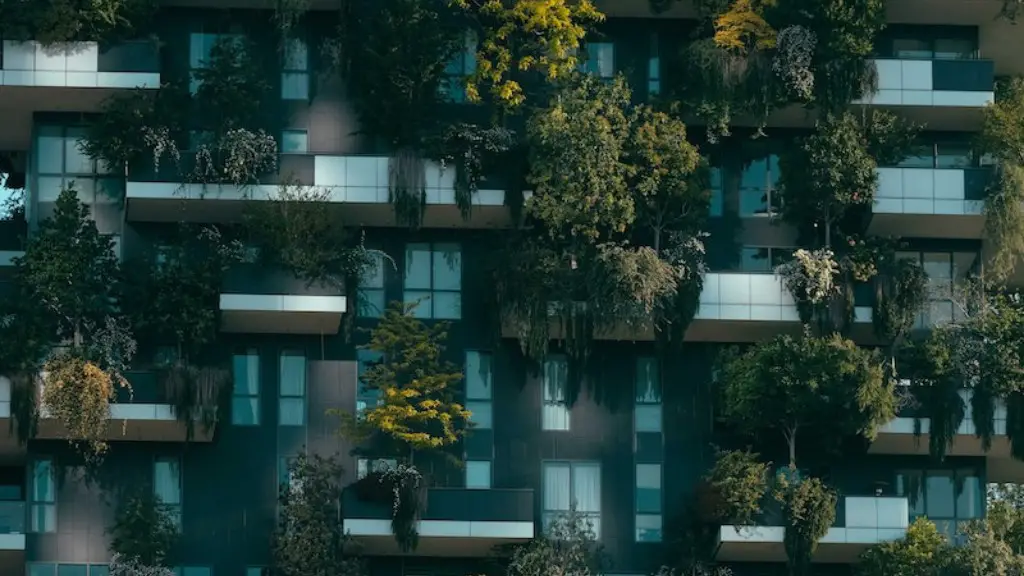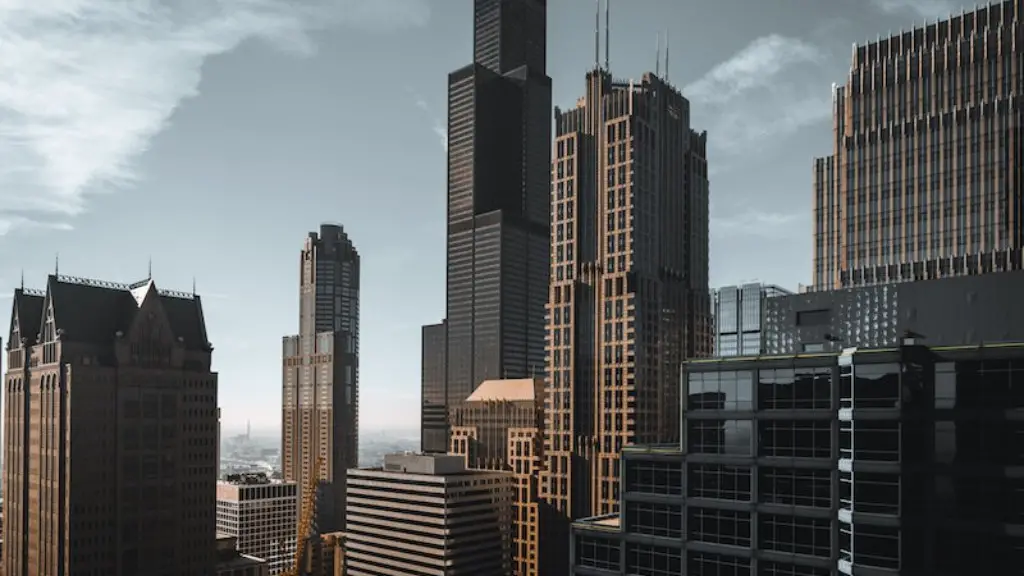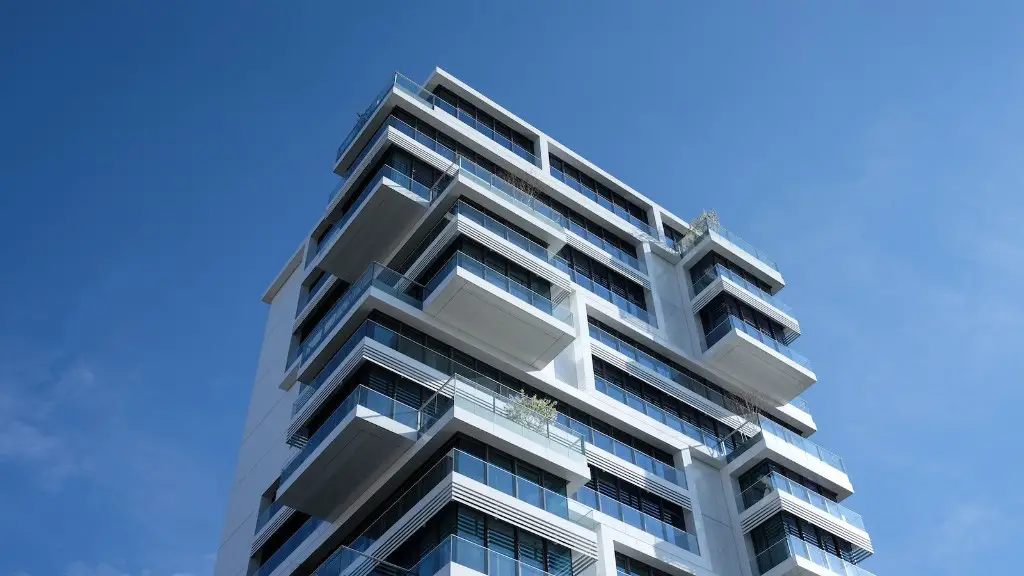The forms of architecture that are developed today are largely shaped by the current wants, needs, and resources of society. Contemporary architecture is not just about shapes, building materials, and construction techniques, but also about how our surroundings impact our lives and how we use the environment. Contemporary architects aim to create living and working spaces that are designed to promote social interaction, encourage sustainability, and respond to the changing needs of the future. This article will explore the forms of contemporary architecture and their impact on our daily lives.
We often think of contemporary architecture as being modern and highly advanced, but in fact it is a product of the present – a response to the changes and trends within society that ultimately shape what we call “contemporary” architecture. It is typically characterized by bold, simple lines and an emphasis on light and space. There are a few key forms of contemporary architecture, including minimalist, modern, and materials-focused designs.
The minimalism style of architecture has become increasingly popular in recent years, and is characterized by the use of simple forms and shapes. Minimalist design typically features neutral tones, natural materials, and open spaces with uninterrupted lines. The focus is on creating a minimalistic aesthetic that highlights and maximizes the use of light and space.
Modern architecture is a style that is characterized by its integration of practicality, efficiency, and minimization of detail. The goal is to create a functional and aesthetically pleasing environment that is efficient and effective. Modern architecture often uses bright colors and geometric shapes to create a striking visual impression.
The materials-focused style of contemporary architecture is an increasingly popular form, and this style primarily focuses on using materials in innovative ways. This style often makes use of a combination of contrasting materials and textures, such as wood, glass, and steel, to create an eye-catching and unique design. The goal is to create an interior space that is both aesthetically pleasing and physically comfortable.
Contemporary architecture also makes use of advanced technology to create efficient and energy-saving designs. Buildings today are designed with energy-efficient lighting, windows, and roofs as well as insulated walls and ceilings to conserve energy. This can help to reduce heating and cooling costs significantly and improve indoor air quality, as well as provide a more comfortable living space.
Contemporary architecture can also be seen in the increased use of environmentally conscious materials, technology, and building design. For example, architects are now using materials such as bamboo and other eco-friendly materials to create sustainable structures that are energy-efficient and have a low environmental impact. In addition, some architects are now creating “green buildings” that integrate green technologies, such as renewable energy sources and natural ventilation, into the design.
Advantages of Contemporary Architecture
There are many advantages to contemporary architecture including increased energy efficiency, improved indoor air quality, and the use of environmentally conscious materials and technologies. Contemporary architecture is often designed with energy-efficient lighting, windows, and roofs as well as insulated walls and ceilings to reduce energy costs and create a comfortable living environment. Additionally, the use of natural materials and green technologies can reduce the environmental impact of the building, making it a more sustainable structure.
The simplicity of contemporary architecture allows for more flexible design options, offering a variety of aesthetic and practical benefits. Contemporary architecture offers the potential to create visually striking interiors with fewer components. By using natural lighting, bold materials, and minimalistic design elements, architects can create sleek and modern spaces that offer a range of benefits to homeowners and occupants.
The use of advanced technology can also allow architects to create workspace and living spaces that are more efficient and comfortable. By integrating custom automation and smart technologies, architects can create sophisticated living and workspace environments that are tailored to the individual needs of each occupant. This can help to create an enjoyable and productive workspace or living space with less effort from the occupants.
Disadvantages of Contemporary Architecture
Despite the many advantages of contemporary architecture, there are also some drawbacks. One of the main disadvantages is the cost, as contemporary architecture generally requires the use of more expensive materials and technologies. Additionally, the use of advanced technology and automation can increase the cost of upkeep and maintenance.
Contemporary architecture can also be more difficult to maintain due to the use of advanced materials and technologies. For example, some materials used in contemporary architecture are more expensive to replace and repair than traditional materials. Furthermore, some advanced automation systems may require a high level of technical knowledge and training in order to be maintained. This can make it more difficult for those without the necessary expertise to successfully maintain a contemporary structure.
Finally, contemporary architecture can sometimes be seen as cold and uninviting due to its minimalistic design. While this is not always the case, the design may affect the atmosphere of the room or building, resulting in it feeling less homey and inviting. Some people may also find the design to be too industrial or stark, which could put off potential buyers or tenants.
What Factors Are Considered When Designing Contemporary Architecture?
When designing contemporary architecture, architects typically consider the needs and wants of the intended occupants. This includes considering the size, function, and budget of the project as well as the types of materials and technologies that will be used. Additionally, architects must consider the aesthetic expectations of their clients and the overall design goal of the project.
Other factors that are taken into account during the design process include local building codes, environmental considerations, and the availability of materials and technicians. Architects must also consider the potential for future expansion and upgrades, as contemporary architecture typically requires a significant amount of planning and forethought in order to be flexible enough to accommodate any changes that may be necessary down the line.
Finally, the architect must keep in mind the desired aesthetic of the project. Contemporary architecture is typically designed to be visually striking, and architects must consider the use of color, materials, and other design components that will create a visually pleasing and cohesive design. Contemporary architecture should be designed to create a space that is both pleasing to the eye and functional.
What Are Some Examples of Contemporary Architecture?
Some of the most iconic examples of contemporary architecture are iconic skyscrapers such as Burj Khalifa in Dubai, the Space Needle in Seattle, and the Guggenheim Museum in New York. These structures all make use of modern materials and construction techniques to create visually striking designs. Other examples of contemporary architecture include the Apple Spaceship campus in California and the Louvre Pyramid in Paris, both of which make use of advanced technology and automation to create efficient and efficient spaces.
Additionally, there are a number of contemporary residential designs that can be seen throughout the world. These designs typically make use of natural materials, efficient lighting, and open floor plans to create comfortable living spaces. Some examples of contemporary residential architecture include the Garden House in Brazil and the Hotel Inntel Rotterdam in the Netherlands.
What Are The Benefits Of Contemporary Architecture?
The main benefit of contemporary architecture is its versatility. Contemporary architecture allows for more flexible design options and a range of aesthetic and practical benefits. In addition, it is designed with energy-efficient lighting, windows, and roofs as well as insulated walls and ceilings to reduce heating and cooling costs and improve indoor air quality. Furthermore, the use of natural materials and eco-friendly technologies can create a more sustainable structure that has a lower environmental impact. Lastly, contemporary architecture allows architects to design efficient and comfortable space tailored to individual needs.
What Are The Challenges Of Contemporary Architecture?
Like any design style, contemporary architecture has its own unique challenges. One of the main challenges is cost, as this type of architecture requires more expensive materials and technologies in order to create sophisticated and efficient designs. Additionally, advanced automation and smart technologies may require a high level of technical knowledge and training in order to maintain, making it more difficult for those without the necessary expertise. Last, contemporary architecture can sometimes be seen as cold and uninviting due to its minimalistic design, potentially putting off potential buyers or tenants.
.
How Can Architects Overcome These Challenges?
In order to overcome the challenges of contemporary architecture, architects must carefully consider the materials and technologies that are used, as well as the overall design goal of the project. This can help to reduce costs, maintain efficiency, and create a space that is aesthetically pleasing and practical. Additionally, architects should consider local building codes and environmental considerations as well as the potential for future expansion and upgrades.
In terms of aesthetics, architects should strive to use bold materials, geometric shapes, and natural lighting to create a visually appealing interior. This can help to create a more inviting and homey atmosphere, even in a minimalistic design. Additionally, architects should make use of smart technologies and automation to create sophisticated living and workspace environments that are tailored to the individual needs of each occupant.
What Are The Design Trends For Contemporary Architecture?
The design trends for contemporary architecture are constantly changing. Designers and architects are continually exploring new materials and technologies to create effective and efficient designs. Currently, some of the most popular design trends include the use of sustainable materials and green technologies, as well as the integration of smart technologies and automation into the design. Additionally, minimalistic and modern design styles are still popular amongst architects and builders, as these styles can offer aesthetically pleasing and practical benefits.





